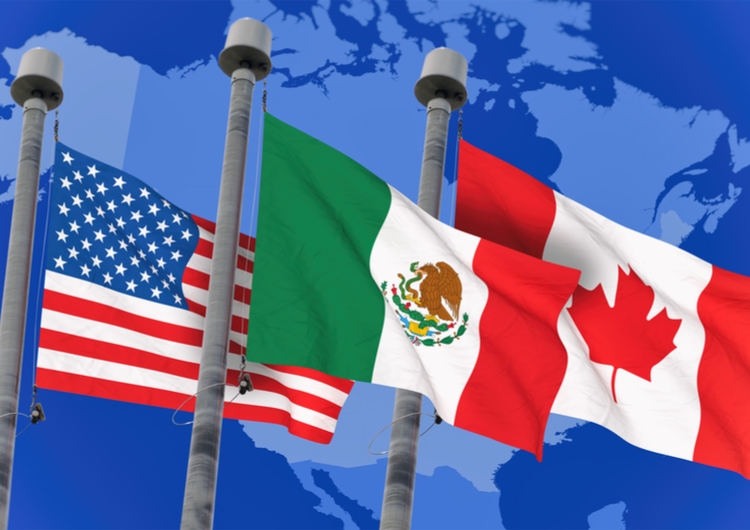Big Changes Coming to Canadian Patents When USMCA Replaces NAFTA

Late Sunday night, an agreement was reached to replace the North American Free Trade Agreement (NAFTA) with the United States-Mexico-Canada Agreement (USMCA). This agreement has significant implications for patent and data protection in Canada and is expected to come into force in the second half of 2019.
First, the USMCA codifies patentable subject matter in Article 20.F.1 to include “all fields of technology” and only certain very specific exclusions are listed (emphasis added):
Article 20.F.1: Patentable Subject Matter
- Subject to paragraphs 3 and 4, each Party shall make patents available for anyinvention, whether a product or process, in all fields of technology, provided that the invention is new, involves an inventive step and is capable of industrial application.1
- Subject to paragraphs 3 and 4 and consistent with paragraph 1, each Party confirms that patents are available for inventions claimed as at least one of the following: new uses of a known product, new methods of using a known product, or new processes of using a known product.
- A Party may exclude from patentability inventions, the prevention within their territory of the commercial exploitation of which is necessary to protect ordre public or morality, including to protect human, animal or plant life or health or to avoid serious prejudice to nature or the environment, provided that such exclusion is not made merely because the exploitation is prohibited by its law. A Party may also exclude from patentability:
(a) diagnostic, therapeutic and surgical methods for the treatment of humans or animals;
(b) animals other than microorganisms, and essentially biological processes for the production of plants or animals, other than non-biological and microbiological processes. - A Party may also exclude from patentability plants other than microorganisms. However, consistent with paragraph 1 and subject to paragraph 3, each Party confirms that patents are available at least for inventions that are derived from plants.
Interestingly, this article contains no specific exclusions for computer-related inventions or business methods, despite the clear resistance to such inventions at least in the Canadian and U.S. Patent Offices. It will be interesting to see whether this explicit definition and inclusion of “all fields of technology” leads to a loosening of the grip on these technology areas or whether the pushback at the Patent Office will remain the same.
Second, Patent Term Adjustments are prescribed by the USMCA under Article 20.F.9 (emphasis added):
Article 20.F.9: Patent Term Adjustment for Unreasonable Granting Authority Delays
- Each Party shall make best efforts to process patent applications in an efficient and timely manner, with a view to avoiding unreasonable or unnecessary delays.
- A Party may provide procedures for a patent applicant to request to expedite the examination of its patent application.
- If there are unreasonable delays in a Party’s issuance of a patent, that Party shall provide the means to, and at the request of the patent owner shall, adjust the term of the patent to compensate for such delays.
- For the purposes of this Article, an unreasonable delay at least shall include a delay in the issuance of a patent of more than five years from the date of filing of the application in the territory of the Party, or three years after a request for examination of the application has been made, whichever is later. A Party may exclude, from the determination of such delays, periods of time that do not occur during the processing of, or the examination of, the patent application by the granting authority; periods of time that are not directly attributable to the granting authority; as well as periods of time that are attributable to the patent applicant.
Patent Term Adjustments are not currently available in Canada and are expected to be a welcome addition to the current patent regime, especially in certain fields of art. For example, for a period of several years, the Canadian Patent Office held patent applications related to diagnostic methods aside and delayed examination substantially while their position on diagnostic methods was solidified. If patent term adjustments were available for these applications, many would be eligible for lengthy term extensions to account for this delay.
Finally, Article 20.F.14 is directed to biologics, which are defined quite broadly as being products “produced using biotechnology processes and that is, or, alternatively, contains, a virus, therapeutic serum, toxin, antitoxin, vaccine, blood, blood component or derivative, allergenic product, protein, or analogous product, for use in human beings for the prevention, treatment, or cure of a disease or condition.”
New biologics (like all other new drugs) are already afforded eight years of data protection in Canada, from the date of marketing approval, with respect to any data or test results that were required to be submitted in order to obtain that marketing approval. According to Article 20.F.14 of the USMCA, data protection for biologics will be increased to at least 10 years:
Article 20.F.14: Biologics
- With regard to protecting new biologics, a Party shall, with respect to the first marketing approval in a Party of a new pharmaceutical product that is or contains a biologic, provide effective market protection through the implementation of Article 20.F.13.1 (Protection of Undisclosed Test or Other Data) and Article 20.F.13.3 (Protection of Undisclosed Test or Other Data), mutatis mutandis, for a period of at least ten years from the date of first marketing approval of that product in that Party.
- Each Party shall apply this Article to, at a minimum, a product that is produced using biotechnology processes and that is, or, alternatively, contains, a virus, therapeutic serum, toxin, antitoxin, vaccine, blood, blood component or derivative, allergenic product, protein, or analogous product, for use in human beings for the prevention, treatment, or cure of a disease or condition.
As Canada readies to implement a number of new changes to the Patent Act and Rules to become fully compliant with the Patent Law Treaty (PLT), it is clear that further modifications will be required to also comply with the USMCA. Big changes are coming, so stay tuned!
1 For the purposes of this Section, a Party may deem the terms “inventive step” and “capable of industrial application” to be synonymous with the terms “non-obvious” and “useful”, respectively. In determinations regarding inventive step, or non-obviousness, each Party shall consider whether the claimed invention would have been obvious to a person skilled, or having ordinary skill in the art, having regard to the prior art.

